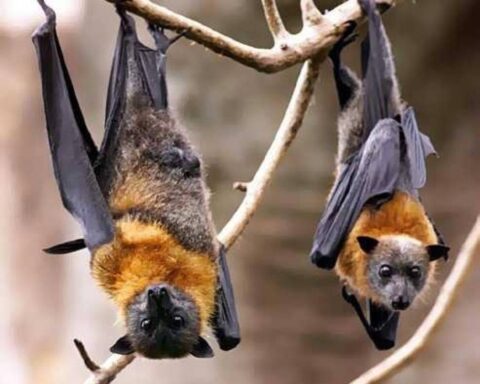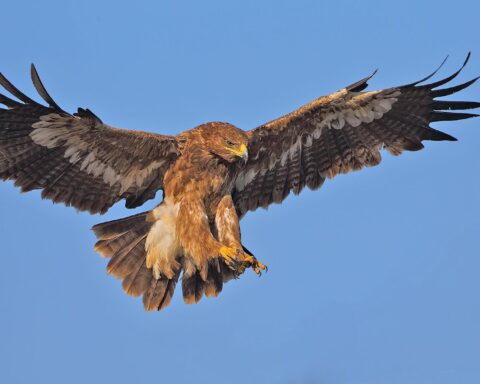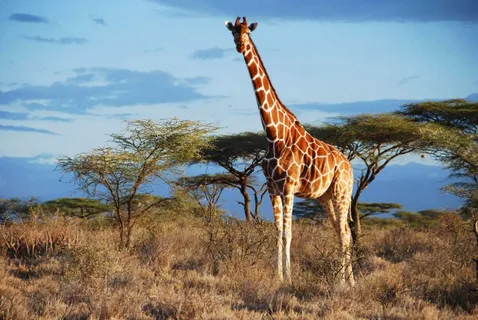The 10 Largest Wild Cats in the World
Physical Characteristics
The 10 largest wild cats in the world are a diverse group of predators that can be found in various parts of the globe, from the Americas to Asia. These majestic animals possess distinct physical characteristics that have evolved over time to suit their environments and hunting styles.
Physical Characteristics

Lion (Panthera leo):
- Weighs up to 550 pounds (250 kg)
- Males reach lengths of up to 8.5 feet (2.6 meters) and stand about 4 feet (1.2 meters) tall at the shoulder
- Coat color varies from tawny or golden to dark brown
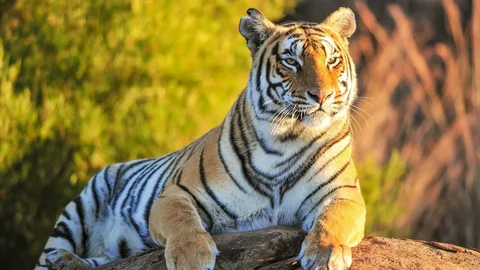
Tiger (Panthera tigris):
- Weighs up to 675 pounds (306 kg)
- Males reach lengths of up to 11 feet (3.3 meters) and stand about 4 feet (1.2 meters) tall at the shoulder
- Coat color varies from reddish-orange to dark black stripes on a white base
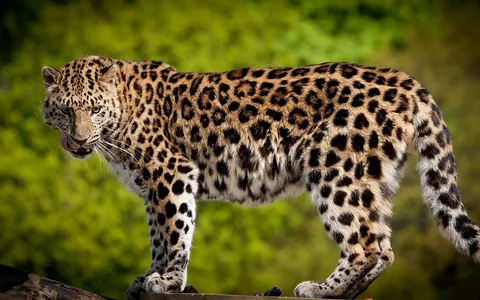
Leopard (Panthera pardus):
- Weighs up to 200 pounds (90 kg)
- Males reach lengths of up to 7 feet (2.1 meters) and stand about 3 feet (0.9 meters) tall at the shoulder
- Coat color varies from dark yellow or golden to dark black spots on a white base
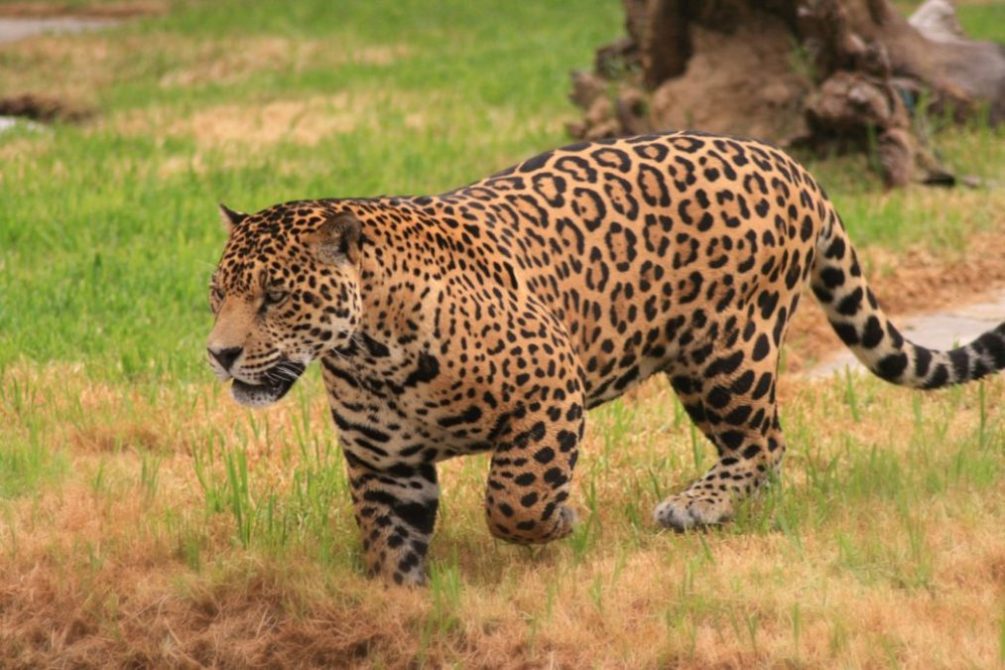
Jaguar (Panthera onca):
- Weighs up to 250 pounds (113 kg)
- Males reach lengths of up to 6 feet (1.8 meters) and stand about 3 feet (0.9 meters) tall at the shoulder
- Coat color varies from dark yellow or golden to dark black spots on a white base
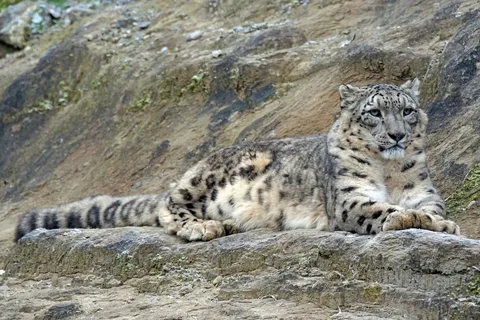
Snow Leopard (Panthera uncia):
- Weighs up to 120 pounds (54 kg)
- Males reach lengths of up to 4 feet (1.2 meters) and stand about 2 feet (0.6 meters) tall at the shoulder
- Coat color varies from smoky gray or white with dark black spots
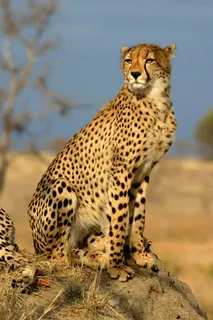
Cheetah (Acinonyx jubatus):
- Weighs up to 120 pounds (54 kg)
- Males reach lengths of up to 5 feet (1.5 meters) and stand about 2 feet (0.6 meters) tall at the shoulder
- Coat color varies from yellow or golden to dark black spots on a white base
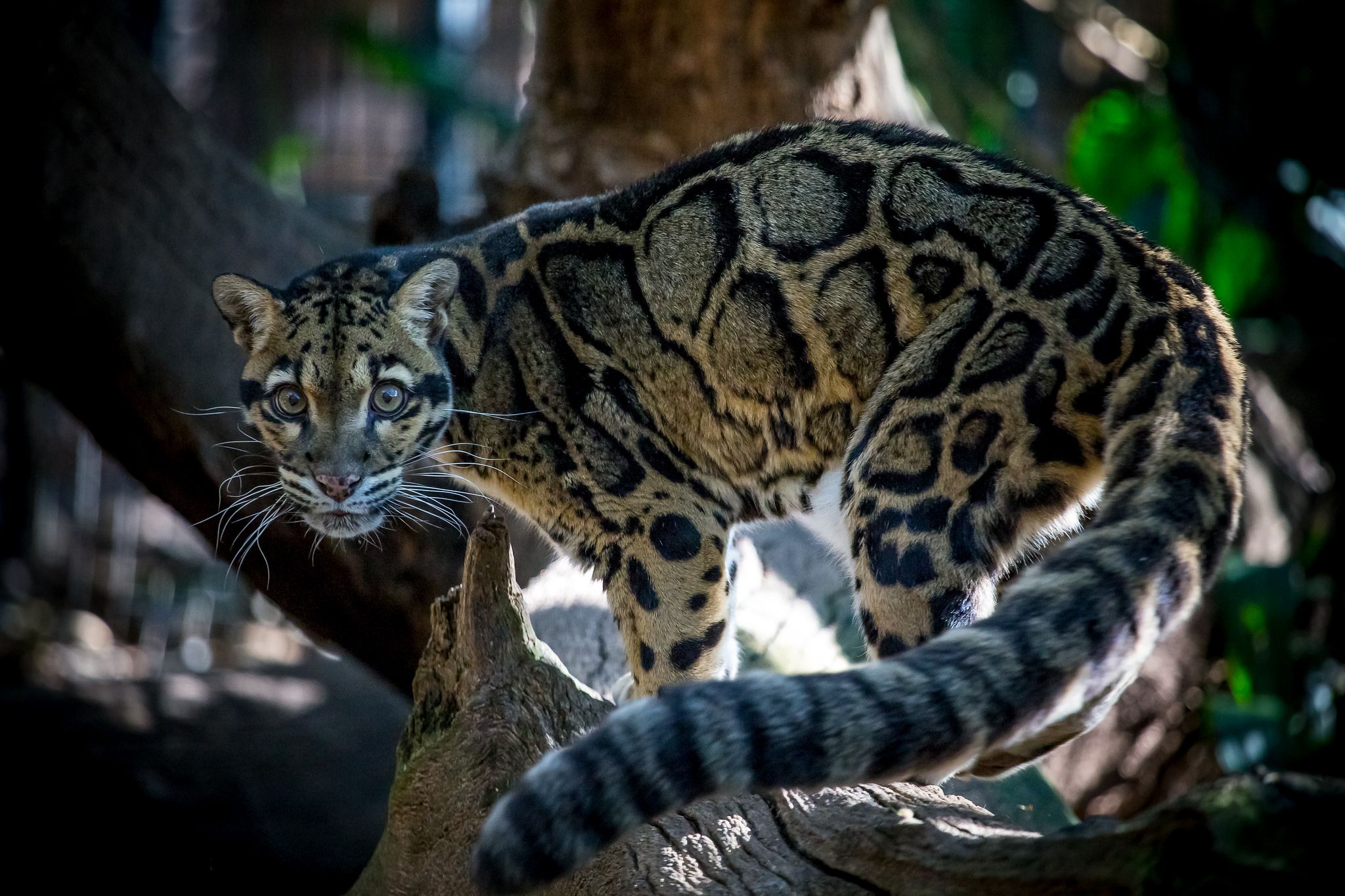
Clouded Leopard (Neofelis nebulosa):
- Weighs up to 30 pounds (14 kg)
- Males reach lengths of up to 4 feet (1.2 meters) and stand about 2 feet (0.6 meters) tall at the shoulder
- Coat color varies from yellow or golden to dark black spots on a white base with clouded patches
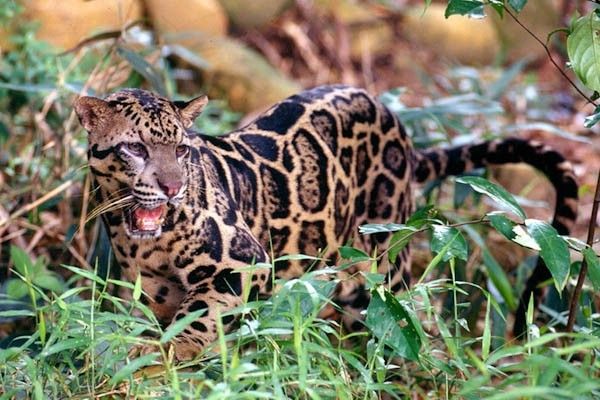
Sunda Clouded Leopard (Neofelis diardi):
- Weighs up to 30 pounds (14 kg)
- Males reach lengths of up to 4 feet (1.2 meters) and stand about 2 feet (0.6 meters) tall at the shoulder
- Coat color varies from yellow or golden to dark black spots on a white base with clouded patches
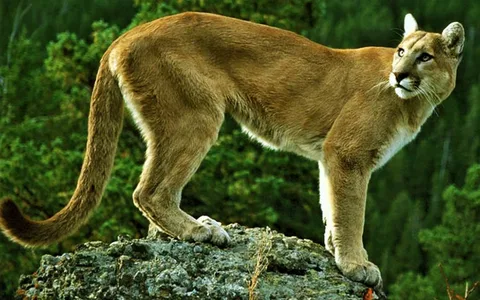
Puma (Puma concolor):
- Weighs up to 200 pounds (90 kg)
- Males reach lengths of up to 7 feet (2.1 meters) and stand about 3 feet (0.9 meters) tall at the shoulder
- Coat color varies from dark yellow or golden to dark brown with no spots
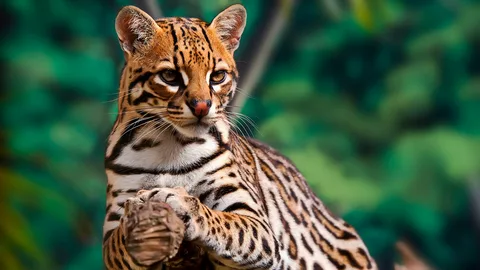
Ocelot (Leopardus pardalis):
- Weighs up to 20 pounds (9 kg)
- Males reach lengths of up to 4 feet (1.2 meters) and stand about 2 feet (0.6 meters) tall at the shoulder
- Coat color varies from dark yellow or golden to dark black spots on a white base with clouded patches
Each of these magnificent animals has evolved unique physical characteristics that enable them to thrive in their respective environments and to survive as successful predators.
Siberian Tiger: Males can weigh up to 700 pounds and reach lengths of over 11 feet.
The Siberian tiger, also known as Panthera tigris altaica, is a subspecies of tiger that is native to Russia’s Far East. It is one of the largest members of the cat family and has several distinctive characteristics.
Males can weigh up to 700 pounds (318 kg), making them one of the heaviest land carnivores in the world. They can also reach lengths of over 11 feet (3.3 meters) from nose to tail, with a shoulder height of around 3.5 feet (1 meter).
The Siberian tiger has thick fur that is well adapted to the harsh climate of its native region. It has a layer of dense undercoat and a longer, coarser outer coat that is orange with black stripes. The fur can vary in color depending on the individual, but it is usually darker on the back than on the belly.
The Siberian tiger’s habitat consists mainly of forests and tundra. They are found in areas with dense vegetation and access to prey, such as deer, wild boar, and small mammals like hares and rodents.
The tiger is a solitary animal and has large territories that it marks with its scent to keep other tigers away. The territory can range from 30 to 400 square miles (80-1,000 square kilometers), depending on the availability of prey and suitable habitat.
Siberian tigers are excellent swimmers and have been known to swim long distances in search of food or shelter. They are also skilled climbers and will often climb trees to rest, hunt, or escape danger.
The Siberian tiger is a top predator in its native range and plays an important role in maintaining the balance of the ecosystem. However, its population has been declining due to habitat loss, poaching, and human-tiger conflict.
Conservation efforts are underway to protect the Siberian tiger and its habitat. These include the establishment of protected areas, anti-poaching patrols, and education programs for local communities. Additionally, research is being conducted to better understand the tiger’s behavior, ecology, and population dynamics.
Lion: Males have a muscular build, with some individuals reaching up to 550 pounds in weight.
Lion males are characterized by their impressive physical stature and powerful physique, which is well-suited for their role as apex predators in their natural habitat. One of the most striking features of male lions is their muscular build, with some individuals reaching remarkable weights.
The heaviest lion on record reportedly weighed a staggering 550 pounds (250 kg), although such exceptional weights are rare and usually associated with older, more experienced males that have had ample opportunity to hunt and feed. Nevertheless, the average weight of an adult male lion is typically between 330-500 pounds (150-230 kg), depending on various factors such as diet, age, and overall health.
The muscular build of lions is made possible by their powerful skeletal system, which includes long legs and sharp claws designed for hunting and killing prey. Their muscles are also incredibly well-developed, particularly in the shoulders, chest, and back, allowing them to generate immense force when tackling and holding onto struggling prey.
It’s worth noting that lion males often appear larger than they actually are due to their shaggy manes, which can add significantly to their perceived size. These majestic coats of hair serve as a visual indicator of the male’s masculinity and social status within the pride, while also providing some protection from the elements.
In summary, the muscular build of lion males is an essential aspect of their biology and behavior, allowing them to excel as formidable predators in their natural environment. Their impressive physical stature and powerful physique are a testament to their remarkable adaptability and survival abilities in the wild.
Tiger: The largest subspecies of tiger is the Siberian Tiger, which can weigh up to 675 pounds.
The Siberian Tiger is indeed the largest subspecies of tiger, and it’s a majestic creature that commands respect with its sheer size and power. Found primarily in Russia’s Far East region, this magnificent animal can weigh up to an astonishing 675 pounds, making it a force to be reckoned with in the wild.
The Siberian Tiger is not just large in size but also possesses a coat of orange-red fur with black stripes that provide excellent camouflage in its native habitat. Its massive paws act as snowshoes during the harsh winter months, allowing the tiger to move silently and strike unsuspecting prey. The tiger’s powerful legs can cover great distances at high speeds, making it an apex predator in its domain.
Despite their size, Siberian Tigers are incredibly agile and can climb trees in pursuit of prey or to escape danger. They have a robust build that allows them to support their massive weight, which is impressive considering the tiger’s ability to reach up to 11 feet in length, including its tail. Their incredible strength also enables them to take down prey much larger than themselves.
In addition to their physical attributes, Siberian Tigers possess exceptional hunting skills and are known for their stealth and patience. They can go for weeks without eating, waiting for the perfect moment to strike when their prey least expects it. This unique combination of size, strength, agility, and hunting prowess makes the Siberian Tiger an awe-inspiring creature that commands respect from all who observe them.
Unfortunately, like many other subspecies, the Siberian Tiger is facing threats to its survival due to habitat loss, poaching, and human-tiger conflicts. Efforts are being made by conservationists and governments to protect their habitats and reduce human-tiger conflicts, but more needs to be done to ensure the long-term survival of these incredible animals.
The Siberian Tiger serves as a powerful symbol of wild nature’s majesty and fragility. As we continue to explore and learn about this incredible subspecies, it’s essential to recognize our responsibility towards preserving their habitats and ensuring their continued existence in the wild for generations to come.
Habitat and Distribution
The 10 largest wild cats in the world are truly awe-inspiring creatures, with diverse habitats and distributions that range across continents and ecosystems. Here’s a detailed look at these majestic animals:
Siberian Tiger (Panthera tigris altaica)
- Habitat: Temperate forests of the Russian Far East, northeast China, and North Korea
- Distribution: Limited to a small area in the Russian Far East, with an estimated population of around 400 individuals
- Description: The largest subspecies of tiger, males can weigh up to 320 kg (705 lb) and reach lengths of 3.5 m (11.5 ft)
Lion (Panthera leo)
- Habitat: Savannas and grasslands of Africa and India
- Distribution: Found in a wide range of countries, including South Africa, Botswana, Kenya, Tanzania, and India
- Description: The second-largest cat species, males can weigh up to 250 kg (550 lb) and reach lengths of 3.2 m (10.5 ft)
Jaguar (Panthera onca)
- Habitat: Tropical rainforests, grasslands, and wetlands in Central and South America
- Distribution: Found in a range of countries, including Mexico, Costa Rica, Argentina, and Brazil
- Description: The largest cat species in the Americas, males can weigh up to 150 kg (331 lb) and reach lengths of 2.4 m (7.9 ft)
Leopard (Panthera pardus)
- Habitat: Africa and Asia, found in a variety of habitats including savannas, forests, and deserts
- Distribution: Found in a wide range of countries, including South Africa, Kenya, India, China, and Russia
- Description: One of the most widely distributed cat species, males can weigh up to 100 kg (220 lb) and reach lengths of 2.1 m (6.9 ft)
Snow Leopard (Panthera uncia)
- Habitat: Mountain ranges in Central Asia, including the Himalayas and the Tibetan Plateau
- Distribution: Found in a range of countries, including China, India, Kazakhstan, Kyrgyzstan, Russia, and Tajikistan
- Description: One of the rarest big cats, males can weigh up to 80 kg (176 lb) and reach lengths of 2 m (6.6 ft)
Clouded Leopard (Neofelis nebulosa)
- Habitat: Tropical rainforests in Southeast Asia, including Indonesia and Malaysia
- Distribution: Found only in a small area of Southeast Asia
- Description: One of the rarest big cats, males can weigh up to 30 kg (66 lb) and reach lengths of 1.2 m (3.9 ft)
Sunda Clouded Leopard (Neofelis diardi)
- Habitat: Tropical rainforests in Southeast Asia, including Indonesia and Malaysia
- Distribution: Found only in a small area of Southeast Asia
- Description: Similar to the clouded leopard, males can weigh up to 30 kg (66 lb) and reach lengths of 1.2 m (3.9 ft)
Eurasian Lynx (Lynx lynx)
- Habitat: Forests and tundras in Europe, Asia, and northern Africa
- Distribution: Found in a range of countries, including Russia, Poland, Norway, Sweden, Finland, and Mongolia
- Description: One of the smallest big cats, males can weigh up to 20 kg (44 lb) and reach lengths of 1.2 m (3.9 ft)
Iberian Lynx (Lynx pardinus)
- Habitat: Mediterranean forests in southern Europe
- Distribution: Found only in a small area of Spain and Portugal
- Description: One of the rarest big cats, males can weigh up to 20 kg (44 lb) and reach lengths of 1.2 m (3.9 ft)
1Canadian Lynx (Lynx canadensis)
- Habitat: Forests in North America, including Canada and the United States
- Distribution: Found in a range of countries, including Canada, the United States, and Mexico
- Description: One of the smallest big cats, males can weigh up to 18 kg (40 lb) and reach lengths of 1.2 m (3.9 ft)
Siberian Tiger: Found primarily in Russia’s Far East region.
The Siberian tiger is a magnificent species of big cat that is native to the Russian Far East and northeast China.
Also known as Panthera tigris altaica, this subspecies of tiger is one of the largest in the world and can weigh up to 700 pounds (318 kg) and reach lengths of up to 11 feet (3.3 meters).
The Siberian tiger’s fur is a distinctive mix of orange and black stripes with white underbelly, providing excellent camouflage in its forest habitat.
Here are some interesting facts about the Siberian tiger:
Habitat: The Siberian tiger primarily inhabits the Russian Far East region, including areas like Primorsky Krai and Khabarovsk Krai, as well as northeast China’s Heilongjiang province.
Diet: The Siberian tiger is an apex predator and feeds on a variety of prey including deer (mainly sika deer and Manchurian wapiti), wild boar, and smaller mammals like hares and rodents.
Conservation Status: The Siberian tiger is listed as Endangered on the IUCN Red List due to habitat loss, poaching, and inbreeding, with estimated numbers ranging from 400-500 individuals in the wild.
Hunting Behavior: The Siberian tiger is a solitary animal and has excellent hunting skills, using its powerful legs and sharp claws to take down prey.
Lifespan: In the wild, the average lifespan of a Siberian tiger is around 10-15 years, while in captivity they can live up to 20 years or more with proper care and management.
The Siberian tiger plays a crucial role in maintaining the ecosystem balance in its native habitats, helping to regulate prey populations and maintain forest health.
However, their numbers are declining due to various threats, including habitat loss and fragmentation, poaching, and human-tiger conflicts.
To conserve this magnificent species, conservation efforts must focus on protecting its remaining habitats, monitoring population dynamics, and engaging local communities in tiger conservation initiatives.
Lion: Once widespread across Africa and Asia, lions now predominantly inhabit savannas and grasslands of southern and eastern Africa.
The lion is a majestic and awe-inspiring animal that has been a part of human fascination for centuries. Its regal appearance, powerful roar, and fearless attitude have made it a popular subject in literature, art, and media.
Lions are members of the Felidae family and are known scientifically as Panthera leo. They are one of the largest felines in the world and are characterized by their golden coats with a short, tawny mane that covers the head, neck, and shoulders of male lions.
The lion’s geographic range was once vast, spanning across Africa and Asia. However, due to human activities such as habitat loss, hunting, and poaching, their population has significantly declined, leading to a major reduction in their range.
Today, lions primarily inhabit savannas and grasslands of southern and eastern Africa. They are found in countries such as South Africa, Kenya, Tanzania, Zambia, Mozambique, Namibia, Botswana, Zimbabwe, Lesotho, and Swaziland.
Lions are carnivores and feed on a wide range of prey including antelopes, zebras, wildebeests, impalas, buffaloes, and other smaller animals. They hunt in groups, using their speed, strength, and coordinated attacks to bring down their prey.
Despite their fearsome reputation, lions are social animals that live in prides. A pride typically consists of several females, their cubs, and one or more males. The females in a pride often collaborate in hunting and childcare, while the males defend the pride’s territory from other predators.
The lion’s roar is an iconic sound that can be heard for miles. They use this vocalization to communicate with each other, mark their territory, and warn off potential threats. Their roars are also an important tool for locating potential mates during mating season.
Lions have a complex social hierarchy within their prides. Dominant females often lead the pride and make decisions about hunting and childcare. Subordinate females may defer to the dominant female’s authority or even challenge her for dominance.
The lion’s population is declining, mainly due to human activities such as habitat loss, fragmentation, and poaching. The decline of their prey base and competition with other predators also contribute to their population decline.
Diet and Hunting Habits
The largest wild cats in the world are apex predators that play a crucial role in maintaining the balance of ecosystems. Their diet and hunting habits are fascinating topics to explore, as they have evolved over time to adapt to their environments.
The first thing to note is that the diets of these large felines vary depending on their habitat and the prey available in their territory. For example, leopards and tigers, which inhabit dense forests and jungles, tend to have a more varied diet consisting of small mammals, birds, and reptiles.
On the other hand, savannah-dwelling lions primarily feed on large ungulates such as zebras, antelopes, and wildebeests. These big cats have developed an impressive hunting strategy, often working together to bring down their prey with coordinated attacks.
The Siberian tiger is another massive wild cat that inhabits the Russian Far East and northeast China. Its diet consists mainly of urial, a type of mountain goat, which provides them with essential nutrients and energy to survive in their harsh climate.
The Amur leopard, critically endangered and found only in the Russian Far East, is another example of a large wild cat that relies heavily on deer and other ungulates as its primary source of nutrition.
The largest of all the wild cats, the sloth bear-sized tiger subspecies (Siberian Tiger), has been observed taking down prey much larger than itself, such as moose This exceptional hunting ability is likely due to its powerful build and highly developed muscles.
An interesting aspect of these wild cats’ diet and hunting habits is their unique relationship with their environment. In certain ecosystems, they have evolved to play a key role in maintaining the balance between prey populations and vegetation growth.
For example, tigers, which are natural predators of herbivores like deer and wild boars, can help regulate their numbers by controlling overgrazing and maintaining vegetation diversity. This delicate balance is crucial for maintaining ecosystem health and preventing negative consequences such as deforestation.
The relationship between these large felines and their environment also has significant implications for conservation efforts. By protecting the natural habitats of these wild cats and ensuring the preservation of biodiversity, we can maintain ecological balance and support the survival of these magnificent species.
Siberian Tiger: Primarily a carnivore with a diet consisting mainly of large ungulates like deer and wild boar.
The Siberian tiger is a majestic and powerful predator that roams the forests and grasslands of Russia’s Far East.
Primarily a carnivore, its diet consists mainly of large ungulates like deer and wild boar, which provide them with the necessary sustenance for survival in their harsh environment.
The Siberian tiger is also known to prey on smaller animals such as hares and birds, but large ungulates make up the bulk of their diet.
In terms of specific dietary composition, studies have shown that Siberian tigers feed on:
- Deer (mainly sika deer and Manchurian wapiti)
- Wild boar
- Hares
- Birds (including game birds and waterfowl)
- Occasionally, they may also prey on domestic livestock such as cattle or horses if the opportunity arises
The Siberian tiger’s diet is also influenced by factors such as availability of prey, seasonality, and geographical location.
For example, in areas where deer are scarce, Siberian tigers may feed more frequently on smaller animals or engage in scavenging behavior to supplement their diet.
In summary, the Siberian tiger’s diet is primarily composed of large ungulates such as deer and wild boar, with smaller animals like hares and birds also forming part of their diet.
Lion: Lionesses often stalk and ambush prey, while males take charge in larger hunts, focusing on bigger game such as wildebeest and zebras.
The lion is a majestic and awe-inspiring predator that reigns supreme over the savannas and grasslands of Africa. With its regal mane, powerful roar, and impressive physical prowess, it is no wonder that lions have long been revered as one of the most iconic animals on the planet.
Interestingly, lionesses are often the primary stalkers of prey, employing stealth and cunning to bring down unsuspecting antelopes, gazelles, and other small mammals. They use their agility and speed to chase down their quarry, before pouncing with deadly precision. This strategy is particularly effective in more open terrain where visibility is better.
On the other hand, males typically take on a more prominent role during larger hunts, focusing on more substantial prey such as wildebeests, zebras, and buffaloes. These massive animals require coordinated attacks to bring them down, with multiple lions working together to wear their quarry out. This collective effort allows male lions to showcase their strength and prowess, earning them respect within their pride.
Lions are members of the Felidae family, making them part of a broader group of big cats that includes leopards, tigers, jaguars, and snow leopards. Within this family, they belong to the genus Panthera, which is characterized by its large size, robust build, and distinctive mane in males.
Physically, lions are impressively built animals with adult males weighing between 330-550 pounds (150-250 kg) and reaching lengths of up to 8 feet (2.5 meters). Their powerful legs and sharp claws allow them to reach speeds of up to 50 mph (80 kph), making them formidable predators in the wild.
In addition to their impressive physical abilities, lions are also highly social animals that live in prides consisting of several females, their cubs, and one or more males. These prides often have a strict hierarchy, with dominant individuals leading the way and subordinates deferring to them. This complex social structure allows lions to maintain control over their territory and protect themselves from potential threats.
Unfortunately, lion populations are facing numerous threats in the wild, including habitat loss, human-wildlife conflict, poaching, and climate change. Conservation efforts are underway to address these challenges and protect lion populations, but more work is needed to ensure the long-term survival of this majestic species.
Royal Characteristics
Social Structure
The social structure of wild cats can be complex and varies among different species. However, many large wild cat species are solitary animals and have a territorial behavior.
Lions, for example, are known to live in prides, which are usually made up of several females, their cubs, and one or more males. The females in the pride do most of the hunting and caring for the cubs, while the males play a key role in defending the territory from other predators.
On the other hand, tigers and leopards are generally solitary animals and have large territories that they mark with their scent to keep other cats away. These big cats are primarily nocturnal and spend most of their time hunting at night.
Cougar (also known as mountain lion or puma) is another example of a solitary animal, although they can sometimes be found in pairs during mating season. They have large home ranges that overlap with other cougars, but they usually don’t interact with each other except for during mating or when competing over food.
Leopards and jaguars are known to live in small family groups in some parts of their range, although this is not as common in other regions. In these social groupings, females do most of the hunting, while males play a more protective role.
The snow leopard has a unique social structure. They often live in solitary but may come together with other snow leopards during mating season or when they share a common prey base. Snow leopard cubs stay with their mother for about 2 years before becoming independent.
Cheetahs are known to be diurnal, which means they are active during the day and rest at night. They live in small family groups called “prides,” but this is different from lions’ prides, as cheetah cubs do not stay with their mothers after a certain age and instead must fend for themselves.
In general, most of these large wild cat species have similar social structures, such as being solitary or living in small family groups. However, the specifics can vary depending on factors like geographic location, prey availability, and human presence.
It’s worth noting that some zoos and wildlife sanctuaries may group large cats together for educational purposes or to observe their behavior up close. This is a controlled environment designed to mimic their natural habitats as closely as possible, but it should not be considered representative of their social structures in the wild.
Siberian Tiger: Typically solitary, with territories ranging from 50 to over 1,000 square miles, depending on the quality of prey and living space.
The Siberian tiger, also known as the Amur tiger, is a subspecies of tiger that inhabits the Russian Far East and northeast China. It is one of the most majestic and powerful big cats in the world.
One of the distinctive features of the Siberian tiger is its solitary nature. Unlike some other big cat species, they do not live in groups or prides. They have large territories that range from 50 to over 1,000 square miles, depending on various factors such as the quality of prey and living space.
The size of their territory varies greatly, with males holding territories up to 2-3 times larger than those held by females. This is likely due to the fact that males are responsible for patrolling the borders of their territory and defending it against other males.
The Siberian tiger’s diet consists mainly of large ungulates such as deer, wild boar, and musk deer. They are skilled hunters and use a variety of strategies to catch their prey, including stalking, ambushing, and chasing.
Despite their impressive size and powerful build, the Siberian tiger is an apex predator in its native habitat. Their main threats come from human activities such as deforestation, poaching, and habitat fragmentation. As a result, they are listed as Endangered on the IUCN Red List, with estimates suggesting that there are fewer than 400 individuals remaining in the wild.
Efforts to conserve the Siberian tiger have been ongoing for several decades, including the establishment of protected areas and reintroduction programs. However, more work needs to be done to address the complex challenges facing this magnificent species.
The study of the Siberian tiger provides valuable insights into the ecology and behavior of large predators in the wild. By continuing to research and learn about these incredible animals, we can gain a deeper appreciation for their place within their ecosystems and strive to protect them for future generations.
Lion: Live in prides, which typically consist of several females, their cubs, and one or more males.
Lions are social animals that live in prides, which is a fundamental aspect of their behavior and ecology. A pride typically consists of several females, their cubs, and one or more males.
The females in a lion pride are usually related to each other, often being sisters or daughters of the same mother. They work together to hunt, protect their territory, and raise their young. The males in a pride are not always closely related, but they do form close bonds with each other and with the females.
Lion prides are typically made up of around 3-15 lions, although some prides can have as many as 30 members. The females in a pride usually account for about two-thirds of the total number of lions, while the males make up about one-third.
The social dynamics of lion prides are complex and multifaceted. Females often form close bonds with each other and will groom and play together. Males, on the other hand, have a more peripheral role in the pride, but they do play an important part in protecting the females and their young from external threats.
One of the key characteristics of lion prides is their shared territory. The females in a pride usually mark their territory with urine and feces to keep intruders away. The males also play a role in defending the territory, although they often do so in a more aggressive manner than the females.
In terms of hunting behavior, lions are skilled predators that use coordinated attacks to bring down their prey. Females usually do most of the hunting, while males provide support and assistance. Lions typically hunt at night, using their exceptional night vision to stalk and ambush their prey.
Lion prides have been observed in a variety of different habitats across Africa and India, from savannas and grasslands to forests and woodlands. In general, however, lions prefer areas with abundant vegetation and access to water sources.
It’s worth noting that while lion prides are often seen as a social unit, they can also be quite dynamic and change over time. New members may join the pride, while others may leave or die off. Despite these changes, the basic structure of the pride remains relatively stable.
Diversity
Evolutionary History
The evolutionary history of the 10 largest wild cats in the world is a complex and intriguing topic, with a rich narrative that spans millions of years. The most recent common ancestor of all modern Felidae species is believed to have lived around 6-8 million years ago, during the late Miocene epoch.
From this ancestral lineage, several distinct lineages emerged, including those that would eventually give rise to the larger wild cat species. One key factor in the evolution of large body size in felids was likely the development of carnivory, which allowed them to exploit high-energy prey sources and thus support larger body masses.
Some of the earliest known members of the Felidae family include Pseudaelurus, a small, weasel-like cat that lived around 20-30 million years ago. This early lineage gave rise to several distinct clades, including those that would eventually produce the modern tiger and leopard.
The big cats – lion, tiger, leopard, jaguar, snow leopard, clouded leopard, cougar, and cheetah – are thought to have diverged from their common ancestor around 6-8 million years ago. This diversification was likely driven by a combination of factors, including geographic isolation, changes in climate and vegetation, and competition for resources.
The lion (Panthera leo) is thought to be one of the most ancient members of this lineage, with fossil evidence dating back around 2.5 million years. The tiger (Panthera tigris) is another ancient lineage, with a history that stretches back around 1.8 million years.
The jaguar (Panthera onca), snow leopard (Panthera uncia), and clouded leopard (Neofelis nebulosa) are also among the most ancient members of this lineage, with a history that stretches back around 1.5 million years.
The cougar (Puma concolor), on the other hand, is thought to be more recently diverged from its common ancestor, with fossil evidence dating back only around 100,000-200,000 years. The cheetah (Acinonyx jubatus) is also a relatively recent divergence, with fossil evidence dating back around 50,000-60,000 years.
The evolutionary history of the 10 largest wild cats in the world is thus marked by a complex interplay between geographic isolation, climatic change, and competition for resources Through millions of years of adaptation and evolution, these majestic predators have developed into the awe-inspiring creatures we see today.
Siberian Tiger: Evolved from a common ancestor with other tiger subspecies approximately 100,000 years ago.
The Siberian Tiger is one of the most majestic and awe-inspiring big cats found in the wild, and it has a rich evolutionary history that spans over 100,000 years. The subspecies is believed to have evolved from a common ancestor with other tiger subspecies during this time period.
Physically, the Siberian Tiger is the largest of all the cat species, both in terms of its size and weight. On average, males can weigh up to 700 pounds (318 kg) and reach lengths of up to 11 feet (3.3 meters). Their thick coats are a mix of orange, black, and white colors, which provides them with excellent camouflage in the snow-covered forests and grasslands where they live.
Despite their size, Siberian Tigers are incredibly agile and have powerful legs that allow them to run at speeds of up to 40 miles per hour (64 km/h). They also possess an impressive hunting ability, using stealth and strategy to catch their prey. Their diet consists mainly of large ungulates such as deer, wild boar, and even small bears.
Siberian Tigers are found in the Russian Far East region, primarily in the Amur- Ussuri regions of Russia’s Primorye and Khabarovsk Krai. They inhabit a vast territory that spans millions of acres and includes forests, grasslands, and mountainous regions.
Unfortunately, the Siberian Tiger is facing several threats to its survival, including habitat loss due to deforestation and agriculture, human-tiger conflict, poaching, and climate change. As a result, conservation efforts are underway to protect their habitats and reduce conflicts with humans. These include establishing protected areas such as national parks and wildlife sanctuaries.
Additionally, researchers are working on various initiatives aimed at conserving the Siberian Tiger population. Some of these projects include camera trap monitoring, which helps track the movements and behavior of individual tigers; DNA analysis to identify genetic diversity within the subspecies; and educational programs for local communities to promote tiger conservation.
It is essential that we take immediate action to conserve this majestic subspecies before it’s too late. Not only would their loss be a tragedy, but also it could have severe consequences on the ecosystem as a whole, since they play a vital role in maintaining the balance of nature. By supporting conservation efforts and raising awareness about the plight of the Siberian Tiger, we can all contribute to ensuring that this incredible species continues to thrive for generations to come.
With continued research, education, and community involvement, there is hope for the long-term survival of the Siberian Tiger in its natural habitat.
Lion: Emerged around 2.5 to 3 million years ago and have since spread across Africa and parts of Asia.
The lion is a majestic species that has been roaming the Earth for millions of years. It emerged around 2.5 to 3 million years ago and has since spread across Africa and parts of Asia, adapting to various environments and habitats.
The lion’s ancestors were likely smaller predators that lived in forests and grasslands. Over time, they evolved into larger, more powerful animals, with males developing distinctive manes that served as a sign of dominance and masculinity.
Today, lions are one of the largest wild cats in the world, with males weighing up to 550 pounds (250 kg) and females reaching weights of around 350 pounds (160 kg). They have a golden-brown coat with a long mane on their neck and shoulders, which they use to intimidate rivals and protect themselves from predators.
Lions are carnivores and feed on a variety of prey, including antelopes, zebras, wildebeests, and rodents. They hunt in prides, using coordinated attacks to bring down their quarry. Once the hunt is over, lions will often rest for hours or even days before resuming their activities.
Despite their fearsome reputation, lions are highly social animals that live in close-knit groups called prides. These prides typically consist of several females and one or more males, with each pride having its own hierarchy and rules. Lions are known for their loud roars, which can be heard from miles away, as well as their playful antics and affectionate behavior.
The 10 largest wild cats in the world include lions, tigers, leopards, jaguars, snow leopards, clouded leopards, Siberian tigers, Amur leopards, Asiatic lions, and African lions. Each of these species has its unique characteristics and adaptations to their environments.
African lions are the largest of all wild cats, with males reaching lengths of up to 8 feet (2.5 meters) and weighing over 550 pounds (250 kg). They have a powerful roar that can be heard from miles away, and are known for their distinctive manes, which they use to protect themselves from predators.
Asian lions, on the other hand, are smaller than African lions but still impressive in size. They weigh around 400-500 pounds (180-230 kg) and reach lengths of up to 6 feet (1.8 meters). They have a golden-brown coat with a distinctive mane that runs along their neck and shoulders.
Lions play a vital role in maintaining the balance of ecosystems, serving as both predators and prey for other animals. Unfortunately, lions face numerous threats, including habitat loss, poaching, human-wildlife conflict, and disease transmission from domestic cats.
Conservation efforts are underway to protect lion populations and their habitats, with organizations working to establish protected areas, educate local communities about the importance of conservation, and provide support for lion research and monitoring programs.
In conclusion, lions are magnificent creatures that have been roaming the Earth for millions of years. They play a vital role in ecosystems as both predators and prey, and their loss would have significant cascading effects on the balance of nature. By working together to protect lion populations and their habitats, we can ensure the long-term survival of these incredible animals.
Conservation Status
Threats Facing the Largest Wild Cats
The world’s largest wild cats are majestic creatures that roam freely in various parts of the globe. These magnificent animals are apex predators, playing a crucial role in maintaining the balance of their ecosystems.
The 10 largest wild cat species include lions, tigers, leopards, jaguars, snow leopards, clouded leopards, cougar (also known as puma), Siberian tigers, Amur leopards, and Asiatic lions. Each of these subspecies is unique in terms of its habitat, behavior, and characteristics.
However, despite their importance and awe-inspiring presence, the largest wild cats face numerous threats to their survival. Habitat loss and fragmentation due to human activities such as deforestation, agriculture, and urbanization are major concerns for these species. As a result, they are forced to migrate, competing with other animals for limited resources and often encountering human-made obstacles.
Another significant threat is poaching Large wild cats are hunted for their fur and body parts, which are believed to possess medicinal properties. For instance, tiger bones are used in traditional Chinese medicine, while lion tails are sold as a status symbol. Poaching not only reduces the population of these majestic animals but also disrupts the delicate balance of their ecosystems.
Predation by other human beings is another major threat. Large wild cats often come into conflict with humans when they encroach on agricultural lands or livestock, leading to attacks and retaliation from farmers and herders. In some cases, they are even killed in retaliation for perceived threats to human safety.
The impacts of climate change are also being felt by these magnificent animals. As temperatures rise, their habitats become more vulnerable to extreme weather events such as droughts and heatwaves, further exacerbating the decline of their populations.
Finally, a lack of conservation efforts and inadequate laws and regulations contribute significantly to the decline of large wild cat populations. Many countries lack the resources or will to enforce anti-poaching laws, while others fail to implement effective conservation measures to protect these species.
In conclusion, the 10 largest wild cats face numerous threats to their survival, including habitat loss and fragmentation, poaching, human-wildlife conflict, climate change, and inadequate conservation efforts. To mitigate these risks, it is essential that we work together as a global community to address these challenges through education, awareness-raising, policy development, and implementation of effective conservation strategies.
Siberian Tiger: Due to habitat loss, poaching for their fur and body parts used in traditional medicine.
The Siberian tiger (Panthera tigris altaica) is a subspecies of tiger that is native to Russia’s Far East and northeast China.
It is the largest cat species in the world, with males weighing up to 320 kg (705 lbs) and reaching lengths of up to 3.5 m (11.6 ft).
Despite its size, the Siberian tiger is a solitary animal and has a large territory, which it marks with scent to keep other tigers away.
The diet of the Siberian tiger consists mainly of deer, but it also preys on smaller animals such as wild boar and hares.
Due to habitat loss, poaching for their fur and body parts used in traditional medicine, the Siberian tiger is listed as Endangered on the IUCN Red List.
The main threats to the survival of the Siberian tiger are the loss of its habitat due to deforestation and urbanization, and poaching for its fur, which is highly valued on the black market.
Additionally, some indigenous communities in Russia’s Far East use tiger body parts in traditional medicine, further threatening the species’ population.
Conservation efforts are underway to protect the Siberian tiger and its habitat, including the creation of protected areas and anti-poaching patrols.
However, more needs to be done to address the root causes of the decline of the Siberian tiger population and to ensure the long-term survival of this magnificent species.
Lion: Habitat fragmentation, poaching, humanwildlife conflict leading to lion deaths or displacement.
The Lion, known for its majestic mane and powerful roar, is facing numerous threats to its survival. Habitat fragmentation is one of the major concerns, where the lion’s natural habitat is being divided into smaller patches due to human activities such as deforestation, agriculture, and urbanization. This not only reduces the available space for lions but also isolates them from potential mates, making it challenging for them to survive in the long run.
Another significant threat to lion populations is poaching. Poachers often target lions for their body parts, which are used in traditional medicine or as trophies. The lion’s paws, manes, and other body parts are highly valued on the black market, driving demand and fueling the trade. This has led to a significant decline in lion numbers across Africa.
Human-wildlife conflict is another major issue affecting lions. As humans encroach upon lion habitats, conflicts arise between the two species. Lions may attack livestock, leading to retaliatory killings by farmers, while humans may also encroach upon lion habitats, forcing them out or killing them. This has resulted in many lion deaths and displacements.
The 10 Largest Wild Cats in the World are
- African Lion: Also known as Panthera leo, this subspecies is found in savannas and grasslands of sub-Saharan Africa. They can weigh up to 550 kg (1,212 lbs) and reach lengths of up to 3.5 m (11.5 ft).
- Asiatic Lion: Also known as Panthera leo persica, this subspecies is found in the Gir Forest National Park in India. They can weigh up to 250 kg (551 lbs) and reach lengths of up to 2.7 m (8.9 ft).
- Tiger: Also known as Panthera tigris, this species is found in forests and grasslands of Asia. They can weigh up to 300 kg (661 lbs) and reach lengths of up to 3.5 m (11.5 ft).
- Leopard: Also known as Panthera pardus, this species is found in Africa and Asia. They can weigh up to 70 kg (154 lbs) and reach lengths of up to 2.4 m (7.9 ft).
- Jaguar: Also known as Panthera onca, this species is found in Central and South America. They can weigh up to 100 kg (220 lbs) and reach lengths of up to 2.5 m (8.2 ft).
- Cheetah: Also known as Acinonyx jubatus, this species is found in the savannas and grasslands of Africa. They can weigh up to 60 kg (132 lbs) and reach lengths of up to 3.5 m (11.5 ft).
- Snow Leopard: Also known as Panthera uncia, this subspecies is found in the mountain ranges of Central Asia. They can weigh up to 65 kg (143 lbs) and reach lengths of up to 2.7 m (8.9 ft).
- Clouded Leopard: Also known as Neofelis nebulosa, this species is found in Southeast Asia. They can weigh up to 20 kg (44 lbs) and reach lengths of up to 1.5 m (4.9 ft).
- Sunda Clouded Leopard: Also known as Neofelis diardi, this subspecies is found in Southeast Asia. They can weigh up to 15 kg (33 lbs) and reach lengths of up to 1.2 m (3.9 ft).
- Flat-headed Cat: Also known as Prionailurus planiceps, this species is found in the tropical forests of Southeast Asia. They can weigh up to 4 kg (8.8 lbs) and reach lengths of up to 60 cm (2.0 ft).
The above list highlights the top 10 largest wild cats in the world, with the lion being the second-largest after the tiger. However, all these species are under threat due to various human activities such as poaching, habitat fragmentation, and human-wildlife conflict. It is essential for conservation efforts to be made to protect these majestic creatures.
Cultural Significance
In Symbolism and Mythology
The world’s largest wild cats are often revered for their majestic appearances, powerful physiques, and fascinating mythologies surrounding them. These felines are not only awe-inspiring but also hold significant symbolism across various cultures, representing strength, ferocity, and sometimes even divine power.
Starting from the top of the list, we have the Siberian tiger (Panthera tigris altaica), the largest of all the subspecies of tigers. Found in Russia’s Far East, these massive felines are often associated with Siberia’s harsh environment and the resilience of its native people.
The Amur leopard (Panthera pardus orientalis) is one of the rarest big cats in the world, found primarily in Russia’s Far Eastern Federal District. Its elusive nature has contributed to its symbolic representation as a powerful and mysterious creature.
Moving on, we have the Asiatic lion (Panthera leo persica), native to India. These majestic creatures are often seen as symbols of royalty and nobility due to their association with ancient Indian kingdoms.
The African lion (Panthera leo) is one of the most recognizable wild cats in Africa. Their social structures, dominated by a pride led by a mighty male, symbolize community, cooperation, and leadership.
The snow leopard (Panthera uncia), found primarily in Central Asia’s mountain ranges, has become an iconic representation of rugged, untamed landscapes and the resilience of life in extreme conditions.
The jaguarundi (Puma yagouaroundi), although smaller than some other wild cats on this list, is still a formidable feline with powerful jaws and a robust physique. Its sleek appearance symbolizes stealth and agility.
The clouded leopard (Neofelis nebulosa) is one of the largest members of the Felidae family. Found primarily in Asia’s tropical rainforests, its unique coat patterns have contributed to its symbolic association with adaptability and camouflage.
The Sunda clouded leopard (Neofelis diardi), found in Southeast Asia, has a striking appearance that reflects its ability to thrive in dense forests and mangrove swamps. Its symbolic representation often ties it to the concept of diversity and resilience.
Lastly, we have the leopards themselves – specifically, the common leopard (Panthera pardus) found across Africa and Asia. Their wide distribution has led to a diverse array of cultural associations with them, including their symbolism as guardians of fertility and prosperity in various societies.
Throughout history, mythology surrounding these wild cats has played a significant role in shaping our understanding of the world around us and our place within it. These majestic felines remind us of our connection to nature, the importance of preserving ecosystems, and the awe-inspiring beauty that surrounds us on this planet.
Siberian Tiger: Often represents strength and resilience in many cultures worldwide.
The Siberian tiger, also known as the Amur or Manchurian tiger, is a majestic big cat that roams the forests and grasslands of Russia’s Far East. It is the largest of all the cat species and represents strength and resilience in many cultures around the world.
Native to the temperate forests and grasslands of Siberia, the Siberian tiger has adapted remarkably well to its harsh environment. Its thick, orange and black striped fur keeps it warm during the freezing winters, while its powerful legs enable it to cover great distances in search of prey.
Weighing up to 700 pounds (320 kg) and reaching lengths of up to 11 feet (3.3 meters), the Siberian tiger is a formidable predator that feeds on large ungulates like deer, wild boar, and even small bears. Its strength is exemplified by its powerful bite force of around 1,000 psi (pounds per square inch), which allows it to take down prey much larger than itself.
Despite its size and strength, the Siberian tiger is a solitary animal that only comes together with other members of its species for mating purposes. It has an incredible ability to survive in its harsh environment, where temperatures can drop as low as -50°C (-58°F) in winter, making it one of the most resilient animals on Earth.
Unfortunately, due to habitat loss and poaching, Siberian tigers are listed as endangered species under the IUCN Red List. Conservation efforts have been implemented to protect their habitats and reduce human-tiger conflicts, but more needs to be done to ensure the survival of this magnificent creature.
The symbolism of strength and resilience associated with Siberian tigers is reflected in various cultures around the world. In Russia, it is considered a national symbol, representing power and courage. Similarly, in China, it is revered as a sacred animal, embodying qualities like bravery and loyalty.
Lion: Frequently used as a symbol of courage, royalty, or power across various cultures.
Lions are majestic animals that have been revered and respected for their strength, bravery, and regal demeanor. They are one of the most recognizable and iconic species in the animal kingdom, and their image is often used as a symbol of courage, royalty, or power across various cultures.
The lion’s mane is a distinctive feature that sets them apart from other big cats. It’s a thick layer of hair around the head, neck, and shoulders that helps to protect the animal during fights and also serves as a sign of masculinity in male lions.
Lions are social animals and live in prides, which are typically made up of several females, their cubs, and one or more males. The females in a pride often have a close-knit relationship with each other and work together to hunt for food and protect their territory.
Here are the 10 largest wild cats in the world:
- Siberian Tiger: Also known as the Amur tiger, it is one of the largest subspecies of tiger and can weigh up to 675 pounds (306 kg).
- Polar Bear ( Ursus maritimus): While not strictly a wild cat, polar bears are members of the family Ursidae and can be considered among the largest wild cats.
- Lion: The majestic king of beasts, lions can weigh up to 550 pounds (250 kg) and reach lengths of up to 8 feet (2.4 meters).
- Leopard: With a weight range of up to 200 pounds (90 kg), leopards are known for their distinctive spots and agility.
- Jaguar: These big cats can weigh up to 250 pounds (113 kg) and reach lengths of up to 6 feet (1.8 meters).
- Snow Leopard: Also known as the ghost of the mountains, snow leopards are adapted to high-altitude habitats and can weigh up to 120 pounds (54 kg).
- Cheetah: While not the largest wild cat, cheetahs are incredibly fast, reaching speeds of up to 70 mph (113 km/h) in short bursts.
- Clouded Leopard: These cloud-dwelling cats can weigh up to 30 pounds (14 kg) and reach lengths of up to 4 feet (1.2 meters).
- African Wildcat: A smaller subspecies of wild cat, African Wildcats can weigh up to 20 pounds (9 kg) and reach lengths of up to 3 feet (0.9 meters).
- Asian Golden Cat: These golden-colored cats can weigh up to 15 pounds (6.8 kg) and reach lengths of up to 2.5 feet (76 cm).
Lions are known for their impressive hunting skills, which involve stalking prey over long distances and then attacking with lightning speed and stealth. Their strong jaws and teeth allow them to take down a wide range of prey, from small antelopes to large buffalo.
- Countries That Start With The Letter N - September 3, 2024
- Animals That Live In The Tundra - September 1, 2024
- Animals That Live In Madagascar - September 1, 2024




